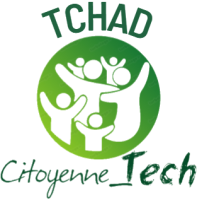Étiqueté : 11
- Ce sujet contient 0 réponse, 1 participant et a été mis à jour pour la dernière fois par
deannabalsillie, le il y a 1 année et 4 mois.
- AuteurMessages
deannabalsillie
Participant<br> Homonuclear 2D 1H,1H COSY and 1H,1H TOCSY experiments showed connectivity of this proton to one and two other protons, respectively (Fig. S2). Signal 2, at 2.73 ppm, corresponds then to a proton neighboring a carbonyl on one side and at least two other protons on the other side with chemical shifts in the 3-4 ppm region. Analysis of the 3-4 ppm spectral region, where standard sugar-ring C-H signals typically show, suggests that the intermediate chemical shifts are closer to Neu5Ac than to 2,7-anhydro-Neu5Ac (Fig. S3). The resulting compound, 4-keto-DANA, is consistent with 2D NMR, and the conjugation would be expected to stabilize the intermediate (full NMR assignment of 4-keto-DANA is given in Table S1). This acidic proton will exchange with solvent by the well-known keto enol tautomerization reaction, consistent with the NMR data (Fig. S1). Comparison of samples differing only in the solvent (light water (H2O) versus deuterated water (D2O) at the same reaction time points showed the loss of specific 1H signals from protons attached at C3 and C5 in D2O, indicating solvent exchange. The loss of these signals led to simplification in the splitting of the neighboring proton signals (Fig. S1).<br>
<br> Analysis of the reaction curve, obtained by monitoring the signals from the methyl protons of the acetamide group at C5, revealed the presence of a new (third) molecule (XY). Bioinformatics analyses revealed the presence of RgNanOx homologues across Gram-negative and Gram-positive bacterial species and co-occurrence with sialic acid transporters. These results revealed the molecular mechanisms of 2,7-anhydro-Neu5Ac catabolism across bacterial species and a novel sialic acid transport and catabolism pathway in E. coli. We showed by electrospray ionization spray MS that the Escherichia coli homologue YjhC displayed activity against 2,7-anhydro-Neu5Ac and that E. coli could catabolize 2,7-anhydro-Neu5Ac. Differential scanning fluorimetry analyses confirmed the binding of YjhC to the substrates 2,7-anhydro-Neu5Ac and Neu5Ac, as well as to co-factors NAD and NADH. Here, using a combination of in silico, molecular, biochemical, and structural approaches, we elucidated the molecular mechanism of RgNanOx and showed that homologous enzymes are present across both Gram-positive and Gram-negative bacteria and are associated with different classes of predicted transporters. The human gut symbiont Ruminococcus gnavus scavenges host-derived N-acetylneuraminic acid (Neu5Ac) from mucins by converting it to 2,7-anhydro-Neu5Ac. We previously showed that 2,7-anhydro-Neu5Ac is transported into R. gnavus ATCC 29149 before being converted back to Neu5Ac for further metabolic processing.<br>
<br> Once inside the cell, 2,7-anhydro-Neu5Ac is converted into Neu5Ac via a novel enzymatic reaction catalyzed by an oxidoreductase, RgNanOx. The reaction is shown in the favorable direction converting 2,7-anhydro-Neu5Ac (1) to Neu5Ac (6). The order of events taking compound 2 to compound 4, including the opening of the 2,7 secondary ring and the primary ring flip, has yet to be determined. N-glycolyl-neuraminic acid (Neu5Gc or NeuGc), in which the N-acetyl group of Neu5Ac is hydroxylated. 4-Keto-DANA exists as an equilibrium between two ring-flipped forms; however, the form with the equatorial glycerol and N-acetyl substituents would be expected to predominate. Based on this information, we proposed that in this species, the glycerol moiety is in the open form, indicating that the 2,7-anhydro bond is broken in the intermediate. Proposed mechanism for the reversible conversion of Neu5Ac to 2,7-anhydro-Neu5Ac by RgNanOx. However, the molecular mechanism leading to the conversion of 2,7-anhydro-Neu5Ac to Neu5Ac remained elusive. Neu5Ac (blue), 2,7-anhydro-Neu5Ac (orange), or XY intermediate (gray). The comparison of the 2D 1H,13C HSQC spectra of the substrate (2,7-anhydro-Neu5Ac), the product (Neu5Ac), and the reaction mixture at 30 min allowed the identification of an additional set of cross-peaks that did not belong to the substrate or to the product and were therefore assigned to the intermediate (Fig. 1, B and C).<br>
<br> Specifically, the presence of a heteronuclear cross-peak at 2.73 ppm/43. If you liked this article and you simply would like to receive more info pertaining to sialic acid powder factory nicely visit our web site. 1 ppm (1H/13C) (signal 2 in Fig. 1B), characteristic of a proton in α to a keto group, strongly suggested the intermediate to be a keto-sugar. The red arrows indicate the keto enol tautomerization of compound 5 that allows for the C5 hydrogen exchange. This is consistent with the NMR observation that the axial, not equatorial proton, undergoes exchange (Fig. S1). NMR characterization of the RgNanOx-catalyzed enzymatic reaction. The addition reaction would be expected to follow the expected anti-periplanar geometry. The product of the addition (2) is a 4-keto-Neu5Ac, in which the proton at C5 is now α to the keto and acidic. This study was able to identify the sialic acid structures recognized by MVM, which were consistent with the oncotropic properties of this virus, in addition to the neurotropism displayed by the lymphotropic strain MVMi. The study is useful in providing answers to several critical questions that are important for industry stakeholders, such as manufacturers, distributors, dealers and policymakers, about which market segments should be targeted over retail cosmetics outlets in coming years to strategize investments and capitalize on growth of the market. Data Lab Forecast sourced these values from industry experts and company representatives, and externally validated through analyzing historical sales data of respective manufacturers to arrive at the overall market size.<br>
- AuteurMessages
